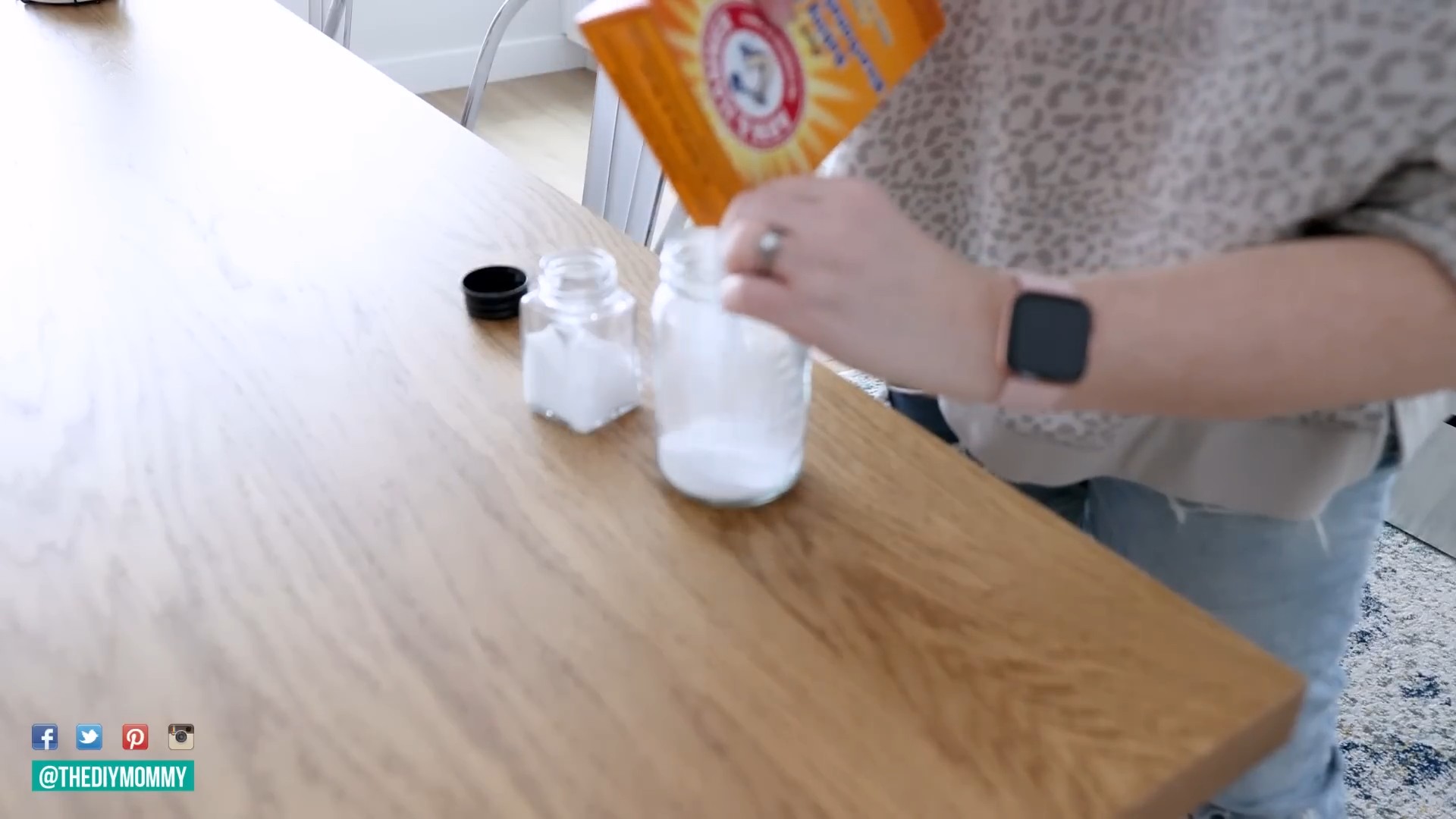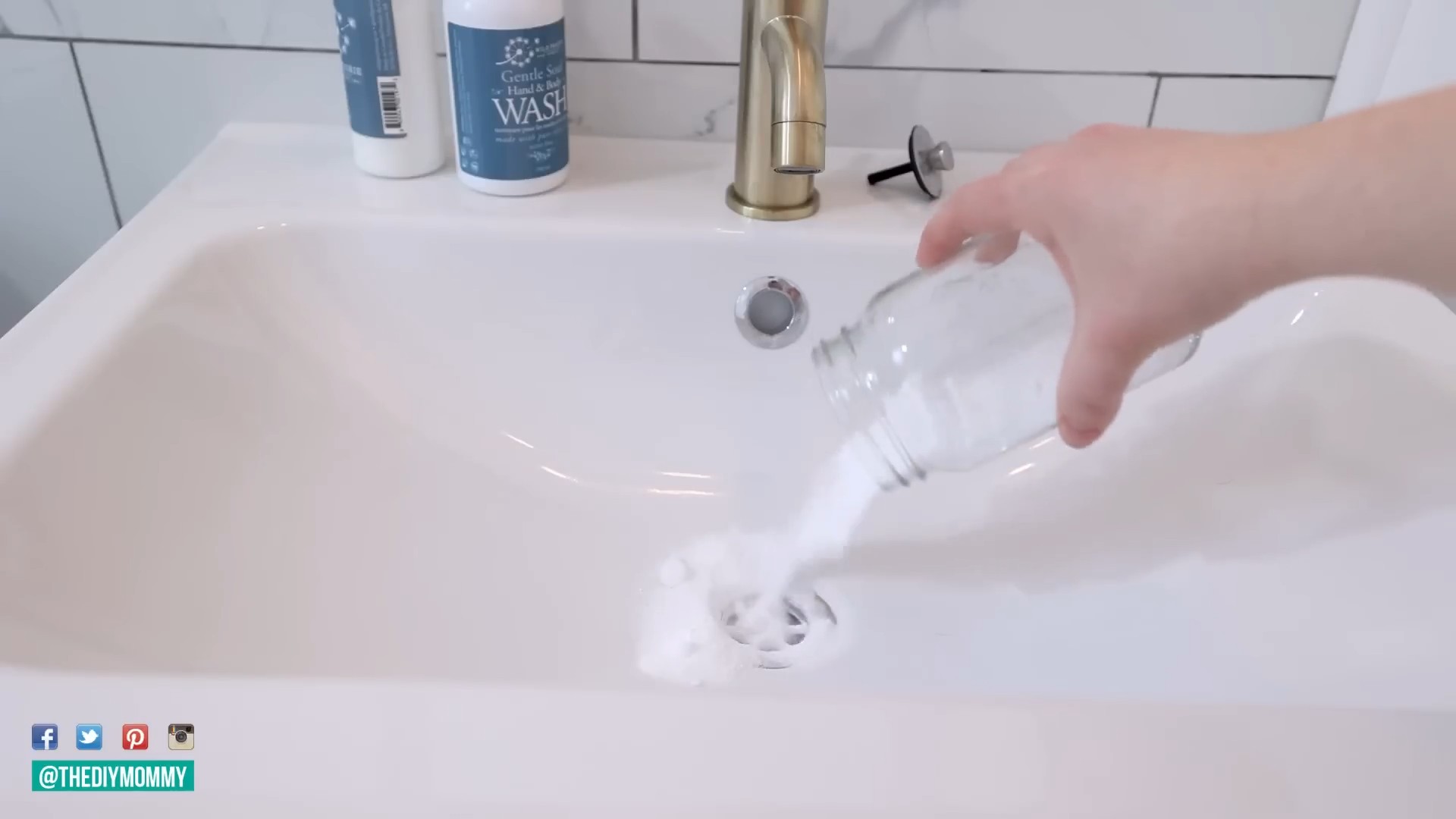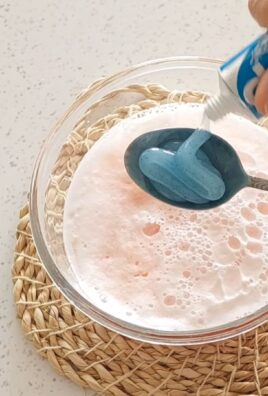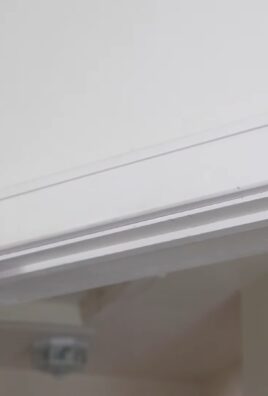Baking Soda Cleaning Uses: Unlock the sparkling potential hidden in your pantry! I’m willing to bet you have a box of baking soda sitting in your kitchen right now, probably tucked away in the back. But did you know that this humble white powder is a powerhouse of cleaning potential, far beyond just keeping your fridge fresh? For generations, baking soda has been a go-to for households seeking natural and effective cleaning solutions. From ancient Egyptians using it in cleaning rituals to our grandmothers relying on it for scrubbing power, baking soda’s versatility is undeniable.
In today’s world, where we’re all looking for ways to reduce our reliance on harsh chemicals and save a little money, mastering baking soda cleaning uses is more relevant than ever. This isn’t just about elbow grease; it’s about smart, sustainable cleaning. I’m going to share some of my favorite DIY tricks and hacks that will transform the way you think about cleaning. Forget expensive, specialized products – with a little baking soda and some know-how, you can tackle everything from stubborn stains to lingering odors. Get ready to discover the magic of baking soda and create a cleaner, healthier home, naturally!

Unlocking the Cleaning Powerhouse: 10 Amazing Baking Soda Hacks You Need to Know
Hey there, fellow DIY enthusiasts! I’m so excited to share some of my favorite cleaning hacks using the humble, yet mighty, baking soda. Forget those expensive, chemical-laden cleaners – baking soda is a natural, affordable, and incredibly versatile alternative. Trust me, once you see what this stuff can do, you’ll be reaching for it all the time!
Why Baking Soda is a Cleaning Superstar
Before we dive into the hacks, let’s quickly touch on why baking soda is such a cleaning champion. It’s mildly abrasive, which helps scrub away grime without scratching surfaces. It’s also a natural deodorizer, absorbing odors instead of just masking them. Plus, it’s alkaline, meaning it can neutralize acids, making it perfect for tackling greasy messes.
Hack #1: Freshening Up Your Mattress
Let’s start with something we often overlook: our mattresses! They can harbor dust mites, dead skin cells, and all sorts of unpleasantness. Here’s how to give your mattress a refresh:
What you’ll need:
* Baking soda
* A vacuum cleaner with a hose attachment
* Essential oil (optional, for added fragrance)
* A sifter or strainer (optional, for even distribution)
Step-by-step instructions:
1. Strip the bed: Remove all bedding, including sheets, blankets, and mattress protectors.
2. Sprinkle baking soda: Generously sprinkle baking soda over the entire surface of your mattress. If you want a subtle scent, mix a few drops of your favorite essential oil (lavender, eucalyptus, or tea tree are great choices) with the baking soda before sprinkling. A sifter or strainer can help distribute the baking soda evenly.
3. Let it sit: This is the crucial part! Let the baking soda sit on the mattress for at least 4 hours, but ideally overnight. This allows it to absorb odors and moisture. The longer, the better!
4. Vacuum thoroughly: Using the hose attachment of your vacuum cleaner, thoroughly vacuum the entire mattress surface. Make sure to get into all the nooks and crannies. Repeat the vacuuming process to ensure all the baking soda is removed.
5. Flip and repeat (optional): If you want to be extra thorough, flip the mattress and repeat the process on the other side.
6. Remake the bed: Once you’re confident all the baking soda is gone, remake your bed with fresh, clean linens.
Hack #2: Deodorizing Your Refrigerator
A smelly fridge is a common problem, but baking soda can easily solve it!
What you’ll need:
* Baking soda
* A small, open container (like a bowl or jar)
Step-by-step instructions:
1. Identify the source: Before you start, try to identify the source of the odor. Remove any spoiled food or containers that might be contributing to the smell.
2. Fill the container: Fill the small container with baking soda.
3. Place in the fridge: Place the open container of baking soda in the back of your refrigerator.
4. Replace regularly: Replace the baking soda every month or two, or more frequently if the odor returns.
Pro Tip: For extra odor-fighting power, you can also sprinkle a thin layer of baking soda on the bottom of your crisper drawers.
Hack #3: Cleaning Your Oven
Oven cleaning is often dreaded, but baking soda makes it much easier!
What you’ll need:
* Baking soda
* Water
* A spray bottle
* A sponge or scrub brush
* Rubber gloves (optional)
Step-by-step instructions:
1. Remove oven racks: Take out the oven racks and set them aside. You can soak them in hot, soapy water while you’re cleaning the oven.
2. Make a baking soda paste: In a bowl, mix baking soda with enough water to form a thick paste.
3. Coat the oven: Spread the baking soda paste all over the inside of your oven, avoiding the heating elements. Wear rubber gloves if you prefer.
4. Let it sit overnight: This is key! Let the baking soda paste sit in the oven overnight (or for at least 12 hours).
5. Scrub and wipe: The next day, use a sponge or scrub brush to scrub away the baking soda paste. It should come off fairly easily, taking the grime with it.
6. Rinse thoroughly: Use a spray bottle filled with water to rinse the oven thoroughly, wiping away any remaining baking soda residue.
7. Replace oven racks: Once the oven is clean and dry, replace the oven racks.
Hack #4: Unclogging Drains
A clogged drain is a major inconvenience, but baking soda and vinegar can often do the trick.
What you’ll need:
* Baking soda
* White vinegar
* Hot water
Step-by-step instructions:
1. Pour baking soda down the drain: Pour about 1/2 cup of baking soda down the clogged drain.
2. Add vinegar: Follow with 1 cup of white vinegar.
3. Let it fizz: Let the mixture fizz and bubble for about 30 minutes. This chemical reaction helps to break down the clog.
4. Flush with hot water: After 30 minutes, flush the drain with a pot of boiling water.
5. Repeat if necessary: If the drain is still clogged, repeat the process.
Hack #5: Cleaning Grout
Dirty grout can make your tiles look dingy. Baking soda to the rescue!
What you’ll need:
* Baking soda
* Water
* An old toothbrush or grout brush
Step-by-step instructions:
1. Make a baking soda paste: Mix baking soda with enough water to form a thick paste.
2. Apply to grout: Apply the baking soda paste to the grout lines.
3. Scrub: Use an old toothbrush or grout brush to scrub the grout lines.
4. Rinse: Rinse the grout lines with water.
Pro Tip: For stubborn stains, you can add a little white vinegar to the baking soda paste. Be careful not to use this mixture on delicate surfaces, as the vinegar can be acidic.
Hack #6: Polishing Silverware
Bring back the shine to your silverware with this simple baking soda trick.
What you’ll need:
* Baking soda
* Aluminum foil
* Boiling water
* A container large enough to hold the silverware
Step-by-step instructions:
1. Line the container: Line the container with aluminum foil, shiny side up.
2. Add baking soda: Add 1 tablespoon of baking soda for every cup of boiling water you’ll be using.
3. Pour in boiling water: Carefully pour the boiling water into the container.
4. Submerge the silverware: Place the silverware in the container, making sure it touches the aluminum foil.
5. Let it sit: Let the silverware sit in the solution for 5-10 minutes. You should see the tarnish transferring to the aluminum foil.
6. Remove and rinse: Remove the silverware from the container and rinse it with water.
7. Dry: Dry the silverware with a soft cloth.
Hack #7: Removing Stains from Coffee Mugs
Those stubborn coffee stains in your mugs are no match for baking soda!
What you’ll need:
* Baking soda
* Water
* A sponge or scrub brush
Step-by-step instructions:
1. Make a baking soda paste: Mix baking soda with a little water to form a paste.
2. Apply to stains: Apply the paste to the coffee stains in the mug.
3. Scrub: Scrub the stains with a sponge or scrub brush.
4. Rinse: Rinse the mug with water.
Hack #8: Cleaning Burnt Food from Pots and Pans
Don’t throw away that burnt pot just yet! Baking soda can help.
What you’ll need:
* Baking soda
* Water
* A stovetop
* A sponge or scrub brush
Step-by-step instructions:
1. Cover the burnt food: Cover the burnt food in the pot or pan with a layer of baking soda.
2. Add water: Add enough water to cover the burnt food.
3. Bring to a boil: Bring the water to a boil on the stovetop.
4. Simmer:

Conclusion
So, there you have it! Unlocking the incredible cleaning power of baking soda is not just a cost-effective alternative to harsh chemicals; it’s a game-changer for a sparkling, healthy home. We’ve explored a multitude of ways this humble pantry staple can tackle everything from stubborn stains to lingering odors, proving its versatility and effectiveness time and time again.
Why is this DIY baking soda cleaning approach a must-try? Because it’s simple, safe, and incredibly effective. You’re ditching the expensive, potentially harmful commercial cleaners filled with mystery ingredients and embracing a natural solution that’s gentle on your family, your pets, and the environment. Think about it: no more worrying about harsh fumes or accidental spills causing damage. Just pure, clean results powered by the magic of baking soda.
But the beauty of baking soda cleaning lies in its adaptability. Feel free to experiment and tailor these methods to your specific needs. For instance, if you’re dealing with particularly stubborn oven grime, try creating a paste of baking soda, salt, and a little vinegar for extra scrubbing power. Or, if you want to add a refreshing scent to your baking soda cleaning solutions, a few drops of your favorite essential oil (like lemon, lavender, or tea tree) can work wonders. For a more abrasive scrub, consider adding a bit of borax to your baking soda paste. Remember to always test any new cleaning solution on an inconspicuous area first to ensure it doesn’t damage the surface.
Don’t be afraid to get creative! Baking soda can be combined with other natural cleaning agents like lemon juice, hydrogen peroxide, or even castile soap to create custom cleaning solutions for various surfaces and messes. The possibilities are truly endless.
We’ve covered a lot of ground, from deodorizing carpets and refreshing mattresses to scrubbing sinks and reviving dull silverware. Each application showcases the remarkable ability of baking soda to neutralize odors, lift stains, and gently scrub away grime without scratching or damaging surfaces.
The key takeaway is this: baking soda is more than just a baking ingredient; it’s a powerful and versatile cleaning agent that deserves a prominent place in your cleaning arsenal.
Now, it’s your turn! We wholeheartedly encourage you to try these DIY baking soda cleaning tricks and experience the difference for yourself. Start with a small project, like deodorizing your refrigerator or cleaning your kitchen sink, and witness the amazing results firsthand. Once you’ve seen the power of baking soda in action, you’ll be hooked!
We’re confident that you’ll be amazed by the effectiveness and simplicity of these methods. And we want to hear all about your experiences! Share your baking soda cleaning triumphs, your creative variations, and any tips or tricks you’ve discovered along the way in the comments below. Let’s build a community of baking soda cleaning enthusiasts and share our knowledge to create cleaner, healthier homes for everyone. So go ahead, grab that box of baking soda, and get cleaning! You won’t regret it.
Frequently Asked Questions (FAQs)
1. Is baking soda safe to use on all surfaces?
While baking soda is generally a gentle abrasive, it’s always wise to test it on an inconspicuous area first, especially on delicate surfaces like polished wood, certain types of stone (like marble), or painted surfaces. Baking soda can potentially scratch or dull these materials if used too aggressively. For these surfaces, consider using a diluted baking soda solution or a gentler cleaning method altogether. Always err on the side of caution and test before applying liberally.
2. Can I mix baking soda with vinegar for cleaning?
Mixing baking soda and vinegar creates a bubbly reaction that can be fun to watch, but it’s not always the most effective cleaning method. The initial fizzing action is due to the neutralization of the acid (vinegar) by the base (baking soda). This reaction produces carbon dioxide and water, which have limited cleaning power. While the fizzing can help loosen some debris, the resulting solution is essentially just slightly salty water. For more effective cleaning, it’s generally better to use baking soda and vinegar separately, applying one after the other, or using them in different cleaning solutions. For example, you can sprinkle baking soda on a surface and then spray it with vinegar to create a localized fizzing action for removing stubborn stains.
3. How do I store baking soda properly?
To maintain its effectiveness, baking soda should be stored in an airtight container in a cool, dry place. Exposure to moisture and air can cause it to clump and lose its potency. A resealable plastic bag or a tightly sealed container works well. Avoid storing it near strong-smelling substances, as baking soda can absorb odors. Properly stored baking soda can last for several years.
4. Can baking soda be used to clean my washing machine?
Yes, baking soda is an excellent natural cleaner for washing machines. To clean your washing machine with baking soda, add about 1/2 cup of baking soda to the drum and run a hot water cycle. You can also add 1/2 cup of white vinegar to the dispenser for extra cleaning power. This will help remove detergent buildup, eliminate odors, and freshen up your machine. It’s recommended to do this every few months to keep your washing machine running efficiently.
5. Is baking soda safe for septic systems?
Yes, baking soda is generally considered safe for septic systems. It’s a natural substance that doesn’t contain harsh chemicals that can harm the beneficial bacteria in your septic tank. In fact, baking soda can even help balance the pH levels in your septic system, promoting healthy bacterial activity.
6. How can I use baking soda to remove odors from my refrigerator?
Baking soda is a fantastic odor absorber. To deodorize your refrigerator, simply place an open box or container of baking soda on a shelf. The baking soda will absorb odors from food and keep your refrigerator smelling fresh. Replace the baking soda every month or two, or more frequently if you notice strong odors. You can also sprinkle baking soda on spills to absorb them before they become smelly.
7. Can baking soda be used to clean burnt pots and pans?
Yes, baking soda can help loosen burnt food from pots and pans. To clean a burnt pot or pan, sprinkle a generous amount of baking soda on the burnt areas and add enough water to cover them. Bring the mixture to a boil and then simmer for 15-20 minutes. Let the pot or pan cool, and then scrub away the loosened food particles. For stubborn burnt spots, you can create a paste of baking soda and water and apply it to the affected areas, letting it sit for a few hours before scrubbing.
8. How can I use baking soda to clean my grout?
Baking soda can effectively clean grout lines. Make a paste of baking soda and water, and apply it to the grout lines. Let it sit for a few minutes, and then scrub with a stiff brush or an old toothbrush. Rinse with water. For tougher stains, you can add a little vinegar to the baking soda paste for extra cleaning power.
9. Can baking soda be used to clean my microwave?
Yes, baking soda can be used to clean your microwave. Mix a few tablespoons of baking soda with water in a microwave-safe bowl. Microwave the mixture for a few minutes until the water boils and the microwave is filled with steam. Let it sit for a few minutes to allow the steam to loosen any food splatters. Then, carefully remove the bowl and wipe down the inside of the microwave with a clean cloth or sponge.
10. What are some other creative uses for baking soda in cleaning?
Beyond the uses mentioned above, baking soda can also be used to:
* Deodorize carpets and rugs: Sprinkle baking soda on the carpet, let it sit for 15-30 minutes, and then vacuum it up.
* Clean and deodorize shoes: Sprinkle baking soda inside shoes to absorb odors.
* Remove stains from clothing: Make a paste of baking soda and water and apply it to the stain before washing.
* Clean and polish silverware: Make a paste of baking soda and water and gently rub it on the silverware.
* Clean toys: Wipe down toys with a solution of baking soda and water.
* Freshen up your garbage disposal: Pour baking soda down the drain followed by hot water.
These are just a few examples of the many ways you can use baking soda for cleaning. Its versatility and effectiveness make it a valuable addition to any cleaning routine.




Leave a Comment